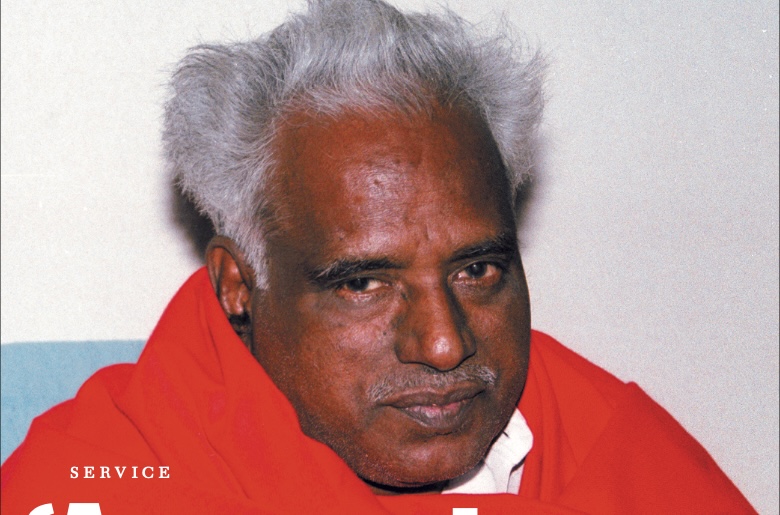By Kesava Mallia
Besides the unique way it’s construction was originally inspired, the famous Adhi Parasakthi Temple of Melmaruvathur, just 50 miles south of Chennai, is distinctive for at least three reasons.
One: Its most stalwart devotees of which there are said to be more than a million wear the color red to signify the life blood they all share be they rich, poor, man, woman or child.
Two: Women are honored first in the temple then children. And volunteer devotees both men and women perform the temple pujas in the Tamil, Kanada, Telugu and Hindi languages, even though, in accord with tradition, highly trained male priests chanting Sanskrit fulfill this function in most South Indian temples.
Three: In just 37 years a short time in the life of a South Indian pilgrimage destination the temple and the spiritual movement that has formed around it have gained international fame.
Now, about that original inspiration. In 1966, a neem tree blew over in a storm, revealing a swayambu (naturally formed) Sivalingam that had been buried beneath it. When a Tamil teacher named Bangaru Adigalar saw this lingam, he experienced a spontaneous spiritual transformation.
In his illumined state he was inspired to build a temple on the very site of the lingam, and arranged forconstruction to begin immediately. Eleven years later, he commissioned famed temple architect Dr. V. Ganapati Sthapati to create the Adhi Parasakthi murti (statue) that is now the temple’s primary Deity, although the original swayambu lingam is still worshiped regularly.
Today Bangaru Adigalar is called “Amma” (mother) and is considered by many to be a physical incarnation of Goddess Parasakthi. For the last 32 years, Amma who is married and has four children has humbly served those who extol him as their guru through the use of a mystical power his devotees refer to as the “gift of intuition.” This “gift” consists primarily of the ability to foresee the future. It is used by Amma only in giving advice to devotees for solving the practical problems of life.
For the purpose of sharing this advice, Amma meets regularly with devotees in a place called Putru Mandapam, built for him next to the temple. There Amma lives in the care of his family, quietly attending to the needs of his congregation.
His message is: “All are a part of the one family of the one Divine Mother. Service to the poor is service to the Goddess. Honor woman as the Goddess.” This clear and simple philosophical premise has gained him immense respect and has spawned a movement of sorts, with some 4,600 worship centers, mandrams, established not only throughout Tamil Nadu but outside IndiaÑin the United States, Singapore, Japan, Malaysia, Australia, Canada, Switzerland, Sri Lanka, France, Nigeria and Zambia.
All maintenance at the temple is also managed by these mandrams, while the day-to-day work is performed by volunteer devotees. With the temple’s high-volume activity, this is no small task. On March 3, 2002, 250,000 people visited Melmaruvathur to celebrate Amma’s 62nd birthday. During the Hindu festival of Thai Pusam, in January of 2002, an estimated two million pilgrims came. On all full-moon days great feasts are prepared for thousands.
Amma has also founded a number of educational institutions, including two universities one for agriculture and the other for scienceÑand an engineering college just for women. A dental school is currently under construction, scheduled to open sometime late in 2004.
In 1986, Amma founded the Adhiparasakthi Charitable Hospital to provide free treatment for the poor. The hospital has already served millions of people from the 600 villages surrounding Melmaruvathur. Currently, the hospital has five wings, 300 beds and employs a staff of 150, which includes 21 doctors. About 900 patients are treated daily. The hospital has organized twelve “eye camps,” providing minor eye surgery and spectacles for free. The last one, in February, 2002, was attended by over 4,000 people.
Even in a world too skeptical of miracles, the harshest critic would have to concede that something divine inspired this man called Amma to serve the poor, to praise women and proclaim the oneness of all.
